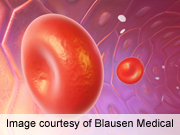
THURSDAY, Feb. 14 (HealthDay News) — Chemotherapy can be a lifesaver for thousands of cancer patients, but a new study suggests that it might slightly raise the odds for a type of leukemia later in life.
Over the past 30 years, the risk for acute myeloid leukemia (AML) has increased for patients who underwent chemotherapy for certain forms of cancer, particularly non-Hodgkin lymphoma, the new study found.
On the other hand, the researchers from the U.S. National Cancer Institute said other cancer survivors may have a reduced risk for AML due to a change in chemotherapy agents that occurred decades ago.
One expert not connected to the study stressed that cancer patients need to put the findings into perspective.
“It’s important to realize that the risk of developing acute myeloid leukemia related to prior chemotherapy is small and increases with the number of chemotherapy treatments given over time,” said Dr. Jonathan Kolitz, chief of hematologic oncology at the North Shore-LIJ Cancer Institute in Lake Success, N.Y.
The study was published online Feb. 14 in the journal Blood.
The findings aren’t a big surprise to oncologists.
“It has long been known that some types of chemotherapy are associated with a high risk of developing subsequent leukemia,” explained study lead author Lindsay Morton, in NCI’s Radiation Epidemiology Branch in the Division of Cancer Epidemiology and Genetics, in an NCI news release. “The goal of this study was to better understand how cancer patients’ risk of developing leukemia has changed over time.”
In conducting the study, the researchers assessed the risk for leukemia of more than 426,000 adults who received chemotherapy for cancer diagnosed between 1975 and 2008. Of these patients, 801 went on to develop AML.
Patients who survived non-Hodgkin lymphoma were at greater risk for AML, the team found. According to the researchers, that may be due to prolonged survival for forms of the disease that require multiple courses of chemotherapy.
Since 2000, patients treated for esophageal, prostate and cervical cancer were also found to be at greater risk for AML, the researchers say. The study also showed that those treated for cancer since the 1990s for cancers of the bones and joints, as well as the endometrium (uterine lining), are also at increased risk for AML.
Meanwhile, patients treated for ovarian cancer, myeloma, and possibly lung cancer may be at reduced risk for AML. The researchers suggested the lower risk among patients with these forms of cancer may be linked to a treatment switch that occurred in the early 1980s from an agent called melphalan to newer, platinum-based chemotherapy.
More research is needed to determine the risks associated with various chemotherapy agents, the researchers said.
For his part, Kolitz said that it is “gratifying to see that the likelihood of developing leukemia from the treatment of several of the studied cancers actually fell over the last decade, very likely because of decreased use of drugs that are most potently [linked to leukemia risk].”
Another expert agreed that the overall risk to any one cancer patient is small.
“This study confirms that a very small number of patients may be at risk for the development of a second cancer due to the effects of chemotherapy,” said Dr. William Carroll, a pediatric oncologist at NYU Langone Medical Center, in New York City.
“Patients should always ask their doctor about the risk of serious side effects associated with particular parts of therapy, and whether agents with fewer side effects can be substituted without compromising the best chance for cure,” said Carroll, who is also director of the NYU Cancer Institute and a professor at the NYU School of Medicine.
“Finally,” he added, “it is increasingly clear that certain patients may be more likely to experience certain side effects based on their own genetic makeup. The ability to determine who is at greatest risk [via genetic testing], thereby allowing therapy to be tapered is one of the fundamental goals of personalized medicine.”
More information
The U.S. National Cancer Institute provides more information on leukemia.

